Introduction
The food service industry is a vibrant field brimming with opportunities. But establishing your presence can be tricky, given the astonishing number of restaurants in the space. So, how can you create a brand that stands out in a competitive market?
Here's your comprehensive guide to restaurant branding, covering tried-and-tested tips, strategies, and restaurant branding ideas for winning hearts and getting your name to the top.
What is Restaurant Branding?
Restaurant branding is a strategic concept that creates a unique and memorable identity that sets a restaurant apart. Ideally, a restaurant brand should embody goals, values, and beliefs that align with the business and its customers.
Branding your restaurant requires a lot of work and requires building a presence and community through online and offline channels, such as in-store, social media, websites, and more. Over time, these branding efforts shape people's perceptions of your restaurant, and partnering with a creative branding agency can help strengthen that impact.
With a strategic restaurant brand, you can increase brand awareness, nurture engagement, and boost your brand value. It allows you to establish trust and nurture brand loyalty, ensuring your diners return for more. And, of course, a strong brand makes your restaurant more money.
So, what makes up a good restaurant brand?
Four Key Elements of a Restaurant Brand
Several elements make up a restaurant brand. When creating your branding strategy, consider four vital brand elements.
Restaurant Logo
When people recognize your logo, your restaurant easily comes to mind. Designing a logo that best represents your brand identity is crucial. Think of the emotional connection your logo can create, too. For example, every kid who sees McDonald's golden arcs from afar grins as they know what's waiting for them: burgers, ice cream, and toys!
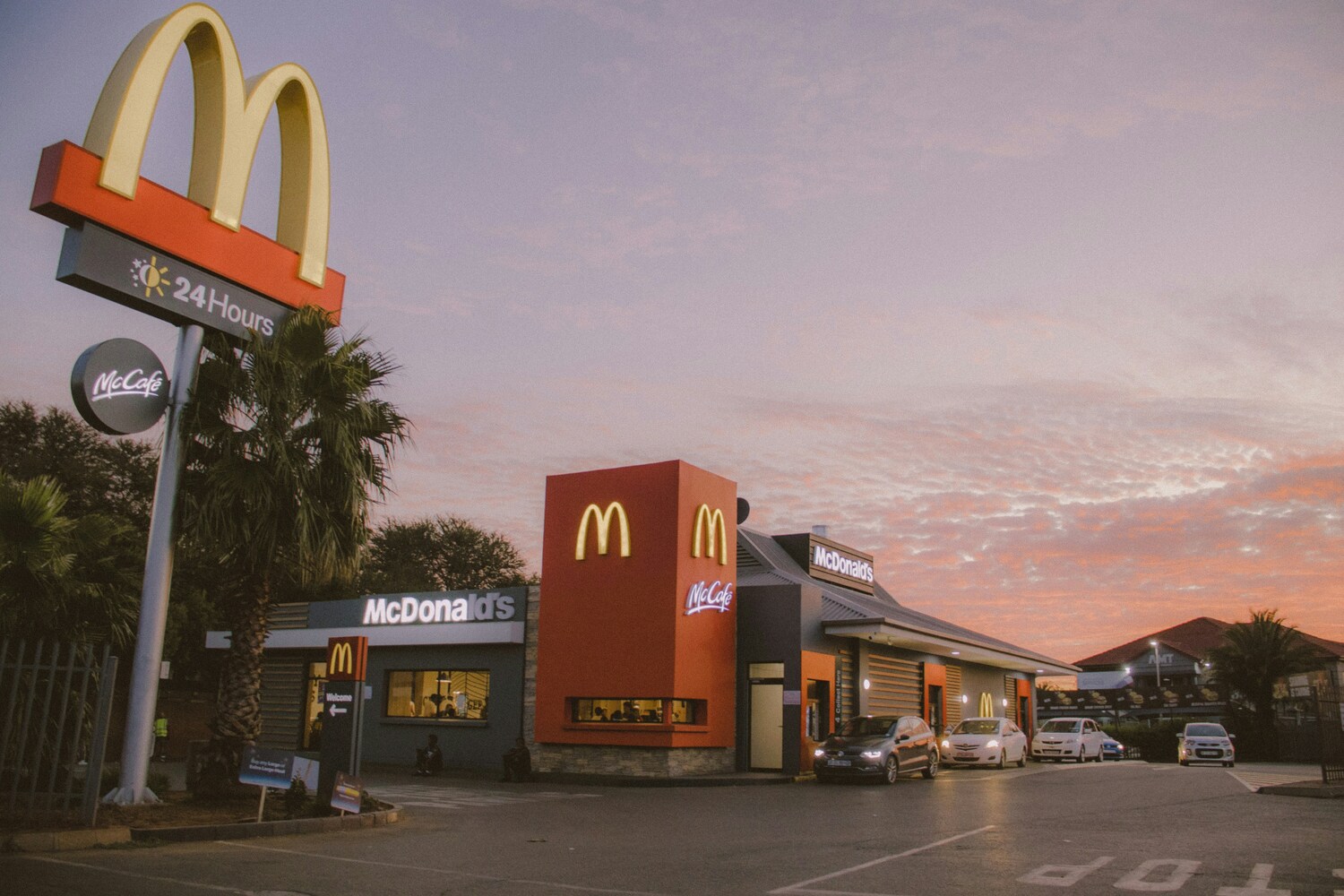
McDonald’s logo evokes happiness among children. Image via Unsplash
Interior Design
People are more likely to eat in a cozy diner than in a restaurant that looks like a laboratory. Enter restaurant interior design.
When it comes to interior design, it's all about emotions. Start by picking a theme that complements your brand personality. For instance, a 50s retro vintage restaurant elicits nostalgia. Other factors like your color palette, interior design style (boho, Scandinavian, minimalist, etc.), and lighting can entice or turn away your diners.
Restaurant Menu
There is no single rule when creating a restaurant menu, but curating food that your customers love is vital. Offer something unique, good quality, and delicious to win diners' hearts.
The design is also a crucial part of your menu. Use images that best represent your dishes. Choose a layout that is pleasing to the eye. Finally, don't forget to add a "Best Selling" section. A cohesive menu that aligns with your brand can earn you a top spot!
Brand Voice
The brand voice is another layer to your brand identity. It refers to how you want to sound to your audience across all communications. It must complement your brand personality, too.
Ideally, the voice you choose is unique to your brand. For instance, Nike uses an inspirational and bold voice in its ads, empowering its audience while emphasizing its commitment to innovation.
Other restaurant branding elements include tagline, brand promise, typography, images, and graphics.
The Advantages of Restaurant Branding
Branding is often overlooked, especially among family-owned restaurant businesses. But this is a costly mistake. In a competitive market, you need to be strategic in your approach to succeed. Here are several reasons why restaurant branding matters.
Restaurant Branding Boosts Brand Awareness
While a delectable menu can entice customers, it will take several steps before they become aware of your restaurant’s existence. With branding, you can leverage social media and other digital means to reach and engage with potential customers. Consider holding events and offering special deals.
These strategies are sure ways to increase brand awareness.
Restaurant Branding Increases Foot Traffic
The more buzz you generate, the more likely customers will check you out! So, invest in paid ads to promote your brand online and offline. You can also create campaigns that target potential customers in your area.
Why not bring your restaurant to them by partnering with food delivery apps? If you have the budget, it is wise to create a dedicated restaurant app to increase accessibility to your business.
Restaurant Branding Establishes Customer Trust
A 70 percent retention rate is ideal if you want to stay in the business. With restaurant branding in action, this is achievable!
Some brand strategies you can implement include loyalty programs and membership schemes that will push your existing customers to return. These efforts can also persuade them to spread the word about your restaurant.
Of course, perks and rewards can only get you so far. Providing a consistently positive brand experience is vital if you want to build and expand your loyal community base.
How to Develop Your Restaurant’s Brand Identity
We have put together a step-by-step guide to creating the foundations of an effective restaurant brand.
Define Your Target Market
Knowing who you serve can be pivotal in creating a successful restaurant brand. But, defining your target market can be tricky.
If you are starting from square one, you can customize your restaurant according to the market you want to attract. Conduct thorough market research and learn about your potential customers' lifestyles, needs, wants, and interests.
It also helps to check out your competitors and see what type of people they serve. Then, you can curate a menu fit for them and scout for ideal locations.
Otherwise, for businesses with existing properties, location is a huge factor in defining their market. Say the restaurant is near a residential area. Then, you are more likely to attract families than business people.
Your prices can also further segment your audience. A fine-dining menu will likely attract high-end customers, while a fast-casual restaurant caters to a broader market looking for affordable food.
Here are some market research tools you can use: * Surveys and questionnaires * Feedback forms (online and in-store) * Google Trends * Social media analytics tools * Focus groups * Competitive analysis
Craft Your Mission Statement
In a nutshell, your restaurant's mission statement summarizes its purpose with your target audience in mind. It defines your objectives and how you plan to achieve them.
A well-defined mission statement can guide the organization when making important decisions. It also establishes confidence and trust among customers and employees toward your brand when you have a clear direction. Finally, it can be a defining factor that sets you apart from other restaurants.
Design Your Visual Identity
Did you know that using warm colors like red and orange can stimulate the appetite? No wonder restaurants like McDonald's and KFC use them in their branding.
Your visual presentation is for more than just aesthetics. Visual elements, like colors, images, fonts, and logos, can influence your customers' minds. Invest in creating a tasteful menu, an enticing website, and well-designed restaurant interiors.
Let's gloss over the following visual elements.
Menu
Your menu need not be boring. Inject your personality through vibrant colors, on-brand copy, and delicious food images. Stick to fonts and font colors that are easy to read. Most importantly, choose a clear and neat layout, too.
Try to avoid overwhelming your customers, whether in terms of design or the amount of food they can order from the menu. That said, be smart when curating your menu.
Start by categorizing your offerings into four categories. For example, section them into appetizers, mains, desserts, and drinks. Then, have three to seven items per category. You can also highlight best sellers, set menus, or lunch specials.
The above suggestions aren't absolute. But less is more!
Logo
Simple and memorable goes a long way. Avoid generic icons and symbols like plates and spoons and create an illustration unique to your restaurant. Consider using a simple color palette and legible fonts. This is especially true if logos are designed for varying screens and formats. This means that you should make sure your logo is scalable and customizable!
Website
Having a a website can boost your professional image can boost your professional image. It is a great way to introduce your restaurant by having all the information customers need in one place.
When tackling web design, integrate SEO strategies to increase your rank on search pages. Select mouth-watering photos and an enticing web design to attract new diners. You can also link your social media pages and vice versa to drive traffic.
Remember that all your visual elements should adhere to your brand style guide to ensure consistency.
Implement Your Brand Across the Board
Your next step is to incorporate your branding into all marketing efforts, interiors and decor, and customer service, to name a few.
Marketing Campaigns
Your brand identity should be front and center when strategizing your marketing campaigns. Consistency is critical, whether through social media or offline platforms. It boosts brand awareness and recall.
One restaurant that's great at branding is Wendy's.
The fast food chain gained popularity for its snarky tweets and social media responses. Often referred to as savage roasts, the brand shows its fun side, which many customers and followers love. Check out some of their viral tweets below.

Wendy’s roasts Oreo. Via X

Wendy’s roasts Monster Energy. Image via X
Of course, you don't have to be controversial or viral. But remain authentic to the personality and values you want to embody, and your efforts will resonate and shine through.
Other marketing strategies you can explore include the following: * Email newsletter for updates, deals, and monthly promotions * Loyalty programs in-store and on food delivery apps * Set menus or discovery menus for new customers to try your food * Collaborative events with other brands
Interior Design and Decor
Let your customers feast their eyes and other senses in an awe-inspiring ambiance that welcomes them before they even taste your dish. You create a dynamic and immersive customer experience by incorporating carefully selected design elements.
For instance, your choice of colors can stimulate or suppress appetite. It is best to avoid combining cold shades like blue and gray. Or how about some plants liven up the place?
Lighting also plays a crucial role in evoking a warm and comfortable feeling. Finally, use textures and spaces—whether through walls, furniture, etc. — to add dynamic to the overall interiors of the restaurant.
Service
What makes the dining experience remarkable is the quality of service provided. It's how attentive the staff are to the customers' needs, the attention to detail and care put in place to elevate every dining moment, or how you provide customer service when problems arise.
That said, it is crucial to invest in a highly trained and on-brand team. Your team should understand the bigger picture and fully support your customer commitments.
To ensure quality service: * Consider creating a comprehensive training program. * Keep your staff up to date on industry best practices. * Listen to your customer's feedback. Often, they bring valuable nuggets on how to further your restaurant brand.
Restaurant Branding Mistakes to Avoid
No one is immune to committing blunders. But here are the big no-nos to avoid in restaurant branding.
Not Responding to Reviews
Responding to reviews—good and bad—shows how committed your restaurant is to improving the quality of service and food you provide. It can be an opportunity to correct misinformation and take ownership of the restaurant's faults. It also shows that you care about your customers.
Heavily Depending on Discounts
While discounts can be great perks to visit your restaurant, overdoing them may convey that your food is not worth it. Instead, innovate and consider more exciting offers to keep your customers coming.
For example, create a monthly special menu that diners can avail themselves of on weekdays. Doing so encourages visits during the slow days and pushes them to try something new on the menu.
You can also engage your social media followers by holding competitions where they can win prizes or offer complementary desserts or drinks when they spend a certain amount.
Missing Out on Brand Partnerships
Become active in your community and participate in organized events that champion local businesses. You can become a sponsor, a participating merchant, or both. By partnering with other brands, you can expand your market reach. It is also a great chance to engage directly with your customers outside the restaurant!
Examples of Successful Restaurant Brands
VANDAL NYC
New York-based restaurant VANDAL is the perfect street art and street food medley. The CEO shares, "Both food and art are expressions of creativity, which is why at VANDAL, we wanted to make sure we perfected the essence we were trying to capture."
VANDAL evokes a speakeasy vibe that transports you to a vibrant world of metropolitan fantasy. The place is sophisticated, yet the graffiti murals' edginess reminds diners of the street influence.
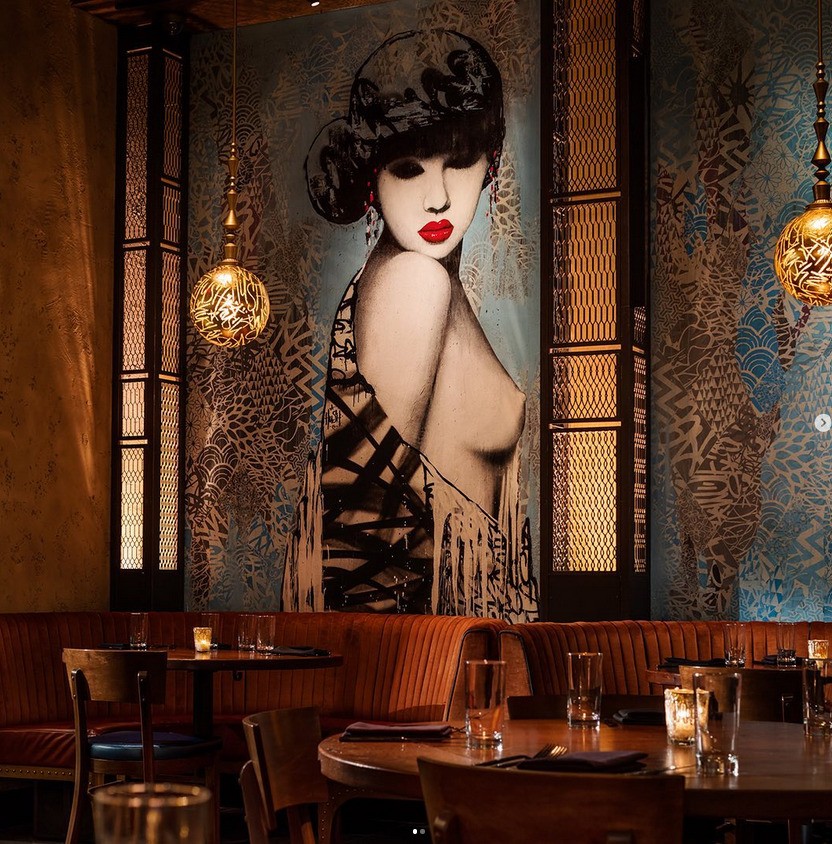
VANDAL showcases graffiti art on its walls. Image via Instagram
It's precisely the opposite of street food dining. Yet VANDAL did not alienate the usual street food vibe altogether. It just elevated it, serving food you usually buy on the streets from diverse cultures. For example, they have their take on Hong Kong's famous egg waffles and bao buns.
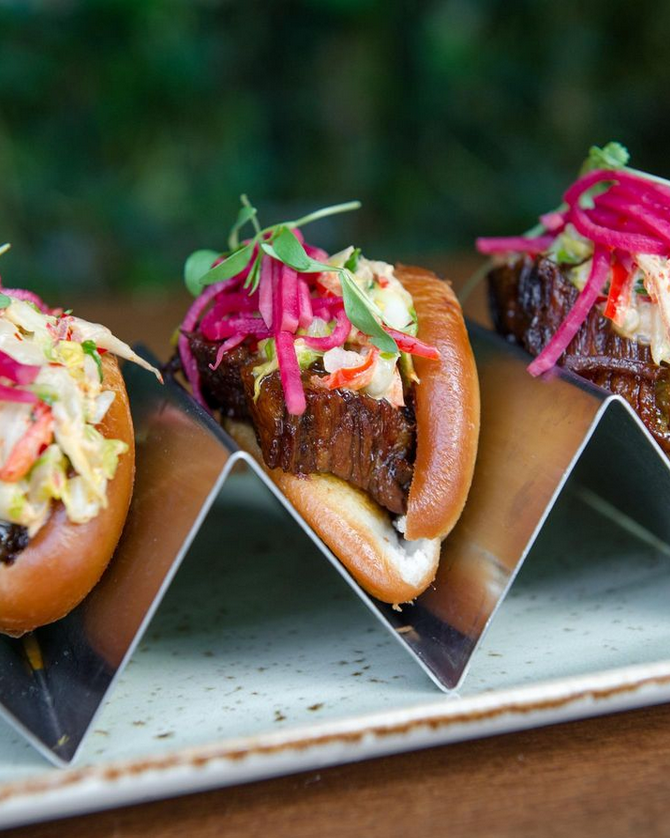
A modern take on the delicious street food, bao buns. Via Instagram
VANDAL's brand identity is defined and unique, as seen in its interior design, menu, and social media presence. It resonates with diners who honor humble food but are not afraid to experiment and experience something new.
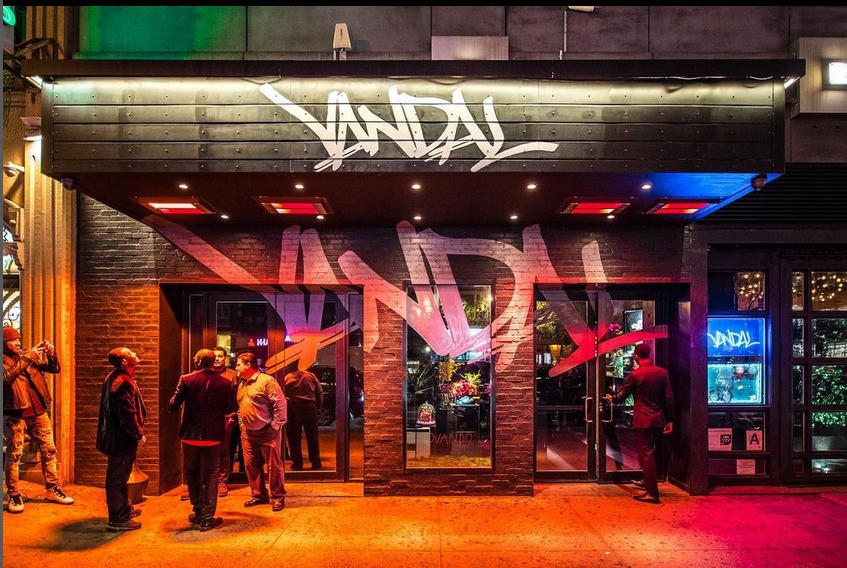
VANDAL elevates the street food experience with a modern twist and street art. Image via Instagram
Dishoom
Dishoom has revolutionized the food scene by introducing a unique Bombay dining experience. It draws inspiration from Irani cafes of the past, which were located in Bombay and welcomed everybody despite the political and religious divide.
So, what catapulted Dishoom to success?
Indian restaurants are abundant in the UK, but what sets Dishoom apart is its commitment to delivering quality food and experience rather than turning profits. In an interview with Guild, Dishoom co-founder Shamil Thakrar shares, "We feel that people are motivated by something very poetic. We want Dishoom to both be beautiful and moving; it should be aesthetically lovely and move you somehow emotionally.
The beautiful melding of cultures is evident in their choice of plates, menu design, and interiors. The brand also has curated Spotify playlists to match the vibe.
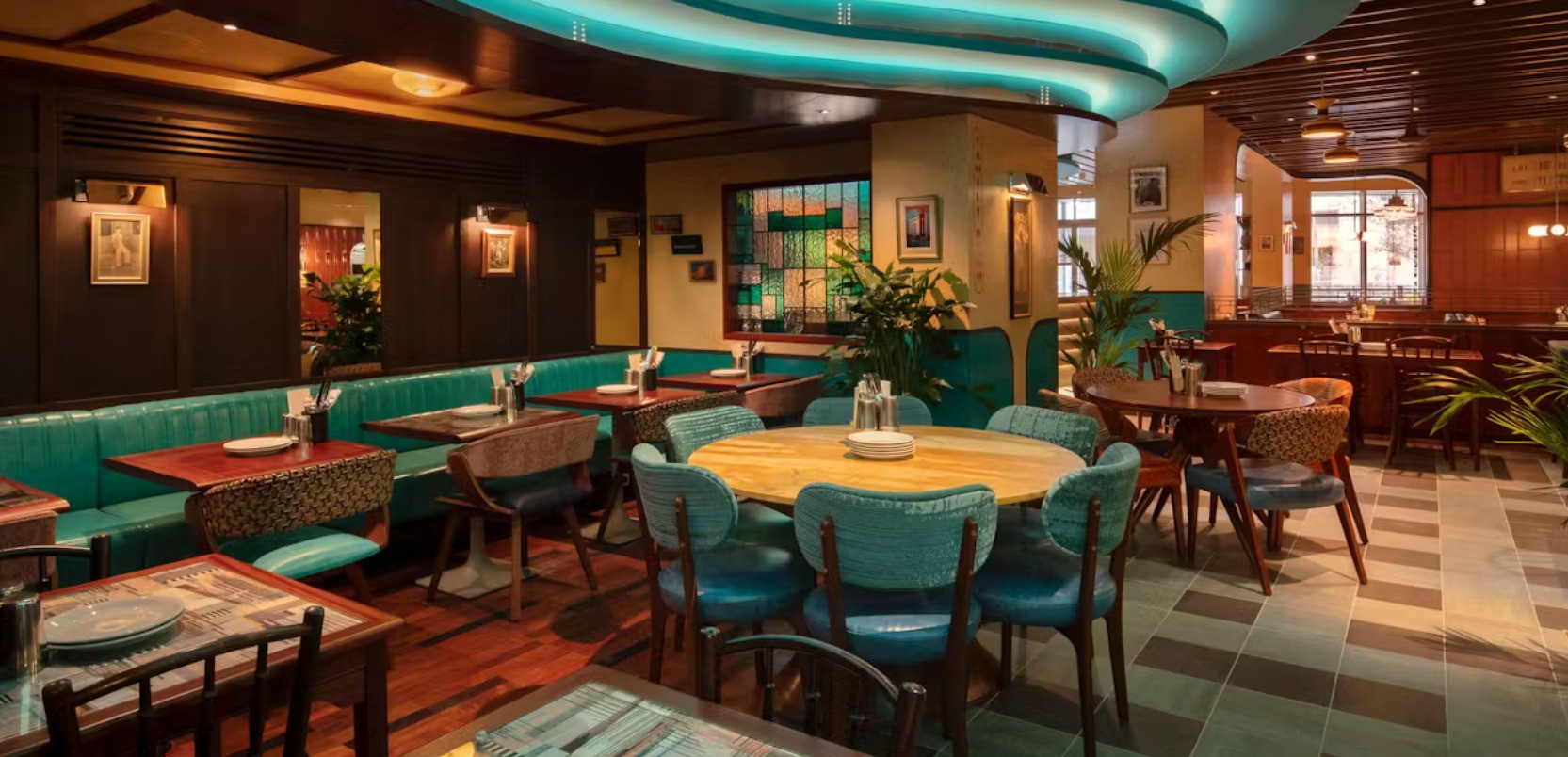
Dishoom Battersea’s interior design. Image via Dishoom
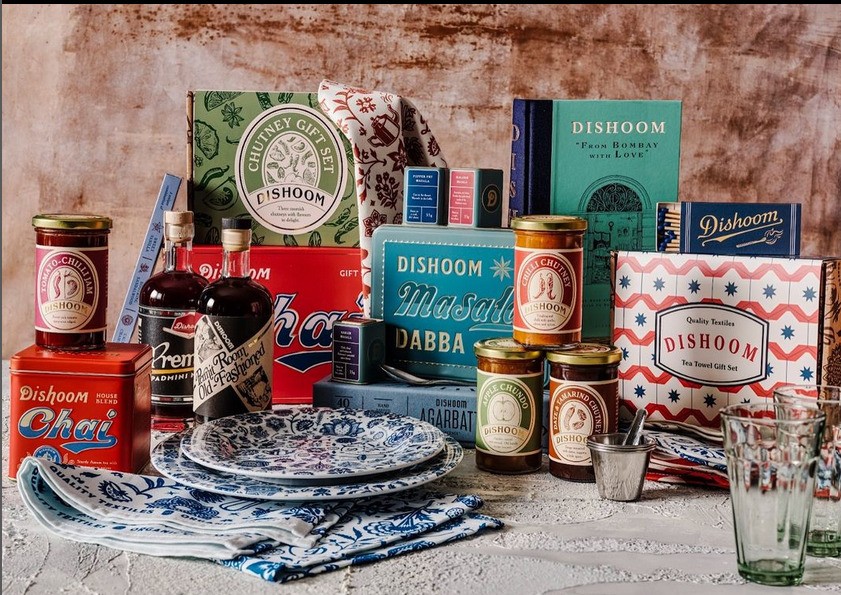
Intricately designed gifts by Dishoom. Image via Instagram
Consistency and cohesiveness are vital to restaurant branding. That said, Dishoom ensures the team embodies the brand. They undergo a thorough orientation that educates them on the restaurant's history. By knowing more about the brand, the staff can align with its mission and core values.
The restaurant chain has consistently won several accolades, and its branches are often fully booked. From a single restaurant in Covent Garden in 2010, Dishoom has eight locations, serving tens of thousands of happy customers!
Final Thoughts
Building a brand for your restaurant is a whole lot of work. Over 700,000 restaurants are vying for customers' attention in the United States alone. Let the professionals take the heavy load when you work with a brand identity firm.
Oct 14, 2024
